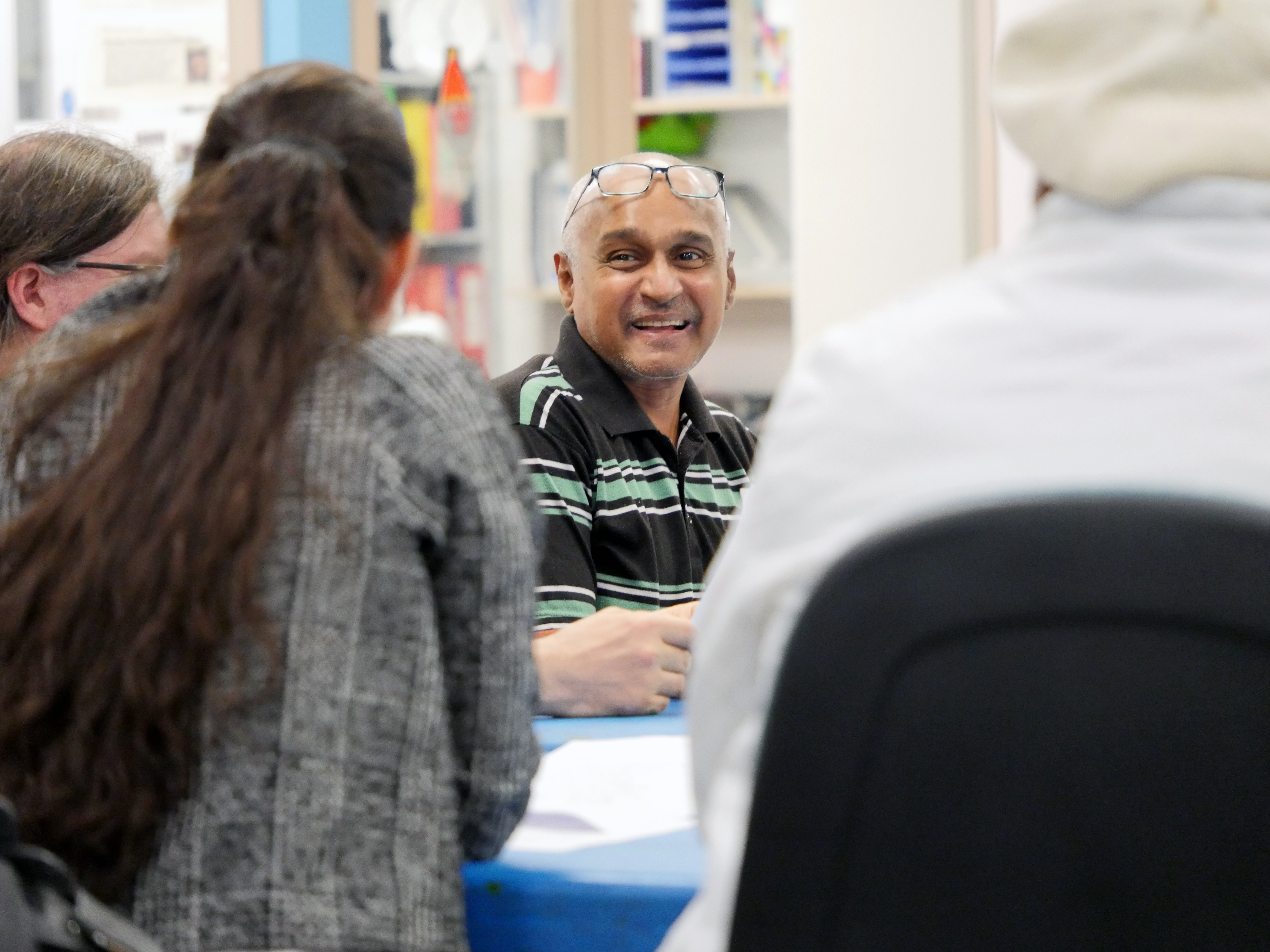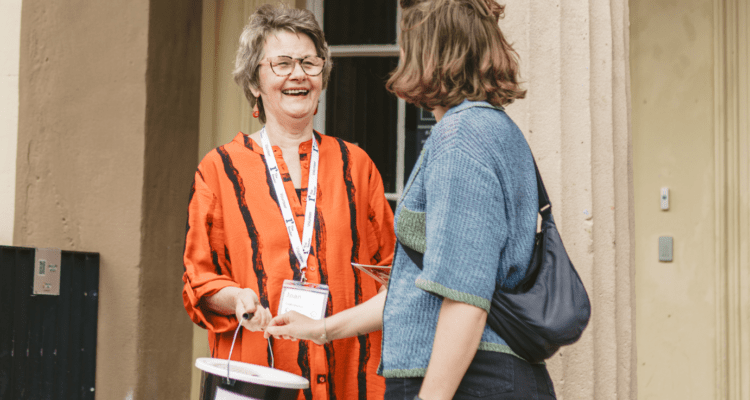Pain Relief through Shared Reading
A Californian study has suggested that a trip to an art gallery can provide pain relief. The Reader's Kate McDonnell, who leads a Shared Reading group for people living with chronic pain, understands why.
"If I miss this session on a Tuesday I can really feel it by the time I get to Thursday or Friday."
Shared Reading group member living with Chronic Pain
An article in The Times this week highlighted research by the University of California’s School of Medicine which indicates that taking part in cultural activities can alleviate chronic pain: ‘Feast your eyes (and ease your aching back) on art’.
We've been running a similar study here in Liverpool.
For over five years now, The Reader has been delivering a Shared Reading group at Broadgreen Hospital for people living with chronic pain. The group has been the subject of two research projects carried out by The Centre for Research into Literature and Society (CRILs) at the University of Liverpool, which explored the impact of a literature-based intervention for those living with chronic pain and a comparative study of Cognitive Behavioural Therapy and Shared Reading.
The Californian research certainly chimes with that of CRILs which found that, as well as providing respite from pain during the sessions themselves, the relief could continue for days afterwards, and even result in a better night’s sleep.
"We’re all broken people, but we’re able to find some wholeness here."
Shared Reading group member living with Chronic Pain
Why is that the case? A big factor seems to be the shared mental challenge of being "in" the reading together, creating a state of ‘flow’ so that people are able to relinquish awareness of their physical needs and bodily state "becoming more fully themselves – more fulfilled and absorbed, more vitally alive – in forgetting the self whilst engaged in meaningful activity."
For many people, reading is a welcome form of escapism but at The Reader, we believe it can also provide a practical way to get closer to something, to feel it more fully and be "in" it. The mental, and sometimes, emotional challenges presented by Shared Reading are enjoyed by groups in a wide range of settings, but the chronic pain group is perhaps unique in that the mental challenges appear to provide a physical escape from pain.
Regardless of previous reading experience, participants in the group universally show a preference for intellectually and emotionally demanding literature, which produces closer concentration and absorbed attention, reducing awareness of pain "as though the extra mental effort helps shift immersion to another level and blocks out the pain more successfully." (Chronic Pain Summary, CRILs)
"There are so many things we can’t do, but this is a ‘can-do’ activity for us."
Shared Reading group member living with Chronic Pain
However, alongside the mental challenge is the sharing and rediscovery through literature of a self that isn’t defined by pain, as Dr Andrew Jones, one of the pain consultants who refers patients to the group (and who himself runs CBT sessions to help people cope) puts it: "When people are in CBT they’re people with pain. When they’re in the reading group, they’re people with lives." (A Comparative Study of Cognitive Behavioural Therapy and Shared Reading for Chronic Pain, CRILs)
Added to this is the sense of community and support that meeting weekly in such an intimate and emotional space brings to the people in the group, who now congregate for coffee at the hospital café before the session starts, who send supportive texts to each other frequently throughout the week and who meet up outside the sessions, providing advice and inviting each other to family celebrations.

One other interesting effect is that it’s changed how people see the hospital itself. One group member said: "Because we come into Broadgreen for this, I feel different about coming to hospital now. Coming here each week makes hospital feel like a more positive experience."
Mood and pain are very much linked, with people living with chronic pain being much more likely to experience depression and people with depression much more likely to experience chronic pain, but the Shared Reading group is a different kind of a ‘shot in the arm’, giving people something positive to take into the week ahead when medicine can only do so much.
“It can feel, for a while, maybe a few days, like an injection of enthusiasm.”
Shared Reading group member living with Chronic Pain
Get involved and be part of the story...
For over a decade, The Reader have been delivering Shared Reading groups in a wide range of settings including hospitals, schools, libraries and community centres, prisons and recovery centres.
We're building a reading revolution to bring Shared Reading into communities across the UK so that wherever you are, whoever you are, you can find a group near you.
Share
Related Articles

Joan: ‘Groups such as ours are vital in supporting people living with dementia to live well and continue to be valued members of society’
As we hit 60% of our £10,0000 target in the third week of our Christmas Appeal, we speak to Joan.…

Three Christmas gift ideas to support a local Liverpool charity and independent bookshop
Christmas is fast approaching and for anyone who would like to gift an affordable thoughtful present that gives a little…

Liverpool’s Calderstones Mansion House CIC welcomes three new members to its board of directors
Calderstones Mansion House Community Interest Company (CIC) has strengthened its board of directors with the appointment of three new members…


